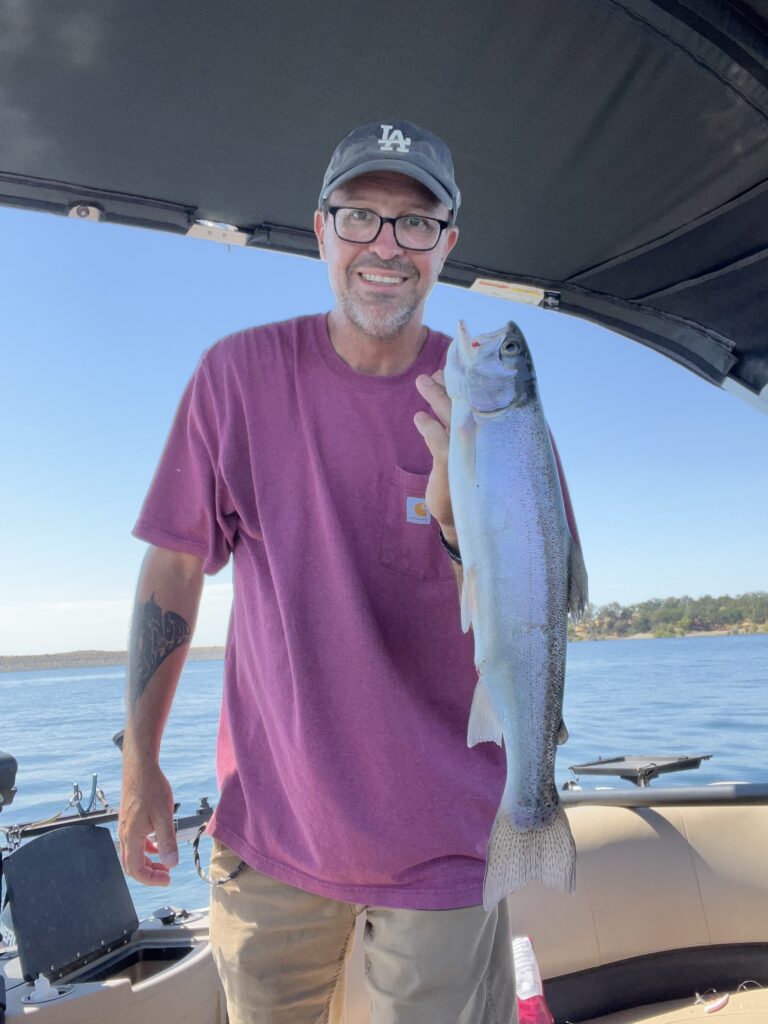No Folsom Blues Here: Sacramento-Area Lake Features Outstanding Fishing
The following appears in the February issue of California Sportsman:
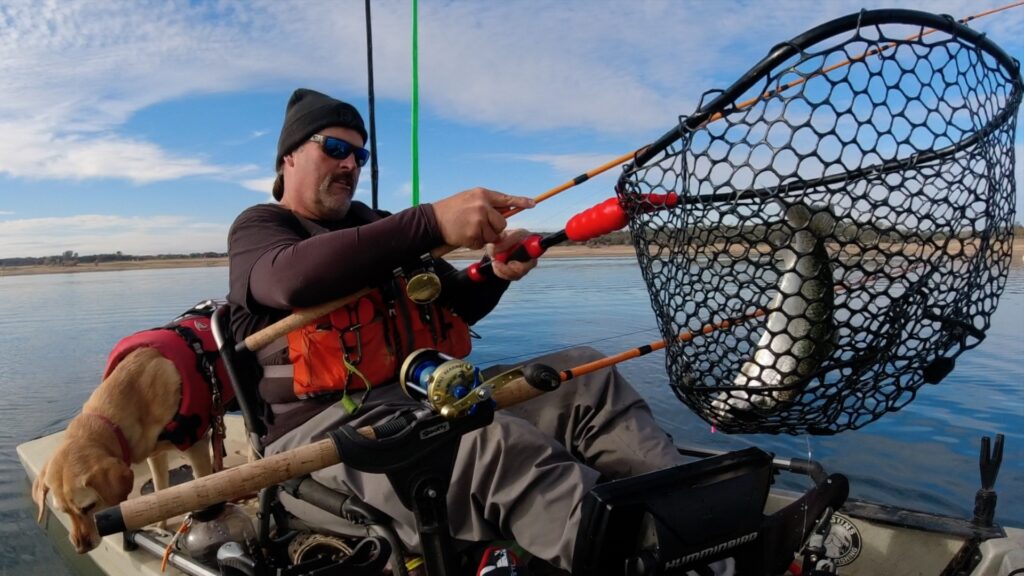
By Cal Kellogg
I’ve been fishing for trout and king salmon at Folsom Lake for the better part of three decades.
I’ve enjoyed many outstanding trips plying the reservoir’s waters, but I’ve also endured my share of frustration. As good as Folsom can be, it can also be quirky and challenging.
Working as a full-time instructional trout fishing guide and lure manufacturer in Northern California, one of the questions commonly tossed my way is how to consistently catch trout and king salmon at Folsom Lake.
Folsom garners a lot of angler interest because it’s a large reservoir offering easy access for folks living in the valley and foothills along the Interstate 80 and Highway 50 corridors. There are a lot of trout anglers in this region, and they know Folsom boasts a strong population of rainbows and kings, yet many of these anglers struggle to hook fish when they visit Folsom.
If you reside within striking distance of Folsom and you’d like to improve your success rate while fishing the lake, continue reading, because I think I can help. Late winter and spring are a great time to fish Folsom, and fishing conditions look to be above average for the 2024 season.
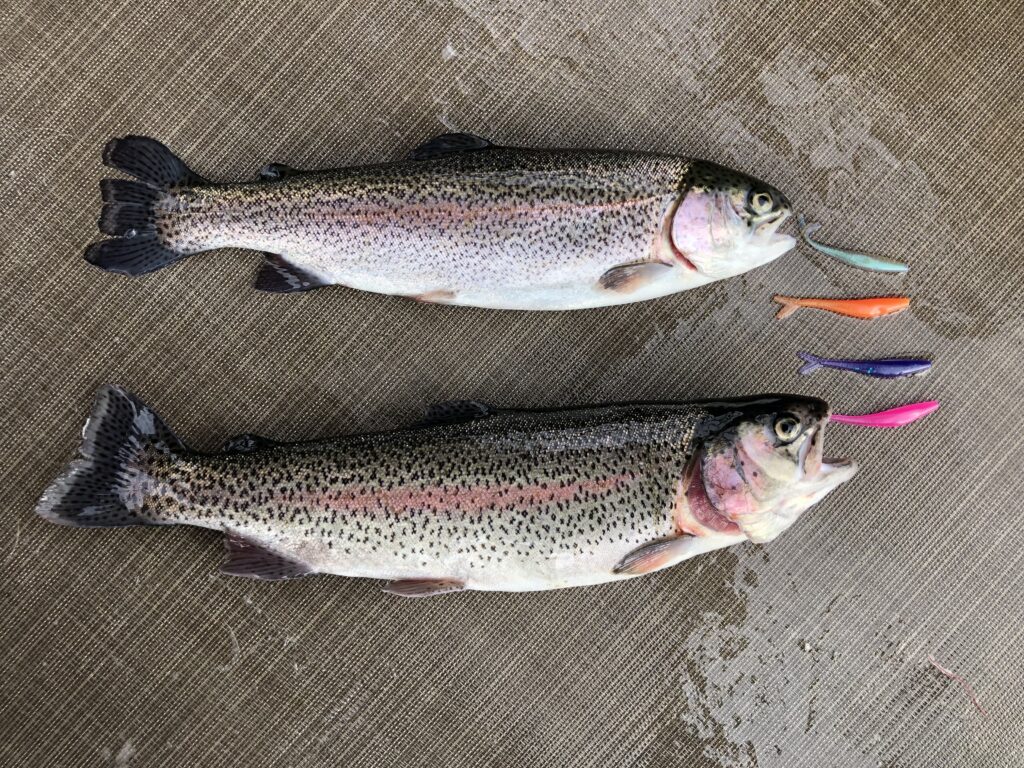
FOLSOM AT A GLANCE
I tell my clients one of the cornerstones of consistent trout fishing success is doing your homework about the body of water you’re fishing, so let’s start there.
Folsom Lake was formed by impounding the North, Middle and South Forks of the American River back in the 1950s. When at full capacity, the reservoir covers 11,500 surface acres.
It features a pair of river arms – the North and South Forks – and a large 200-plus-foot-deep main body bordered by the dam and a system of dikes. For these reasons, you can think of Folsom as three lakes in one.
Gamefish abound in Folsom. It holds channel catfish, smallmouth, largemouth and spotted bass, bluegill, crappie and sunfish, rainbow trout, and landlocked king salmon.
Forage is abundant in the form of both threadfin shad and Japanese pond smelt. At times, the lake’s various gamefish species show a distinct preference for smelt or shad, and there are times when they respond to both equally well.
Folsom’s salmon and trout populations are somewhat unique. You have fish that are planted by the California Department of Fish and Wildlife. In addition to the planters, you have wild populations. These are rainbows and salmon produced by natural spawning in the lake’s arms.
Kings have been documented spawning in the South and North Forks of the American. I’ve personally seen salmon on redds in Mormon Ravine Creek, a tributary of the North Fork.
There are no estimates available of how many kings spawn naturally from one season to the next, but the number likely fluctuates based on river flows in the fall months.
In terms of rainbows, decades of releases have resulted in holdover trout that adapt to Folsom’s environment and live out their lives as “wild” fish. Like the kings, some of these trout do successfully spawn in the tributaries.
Native American River steelhead are also found in the reservoir. There were juvenile steelhead that were trapped behind the dam in the ’50s. The descendants of these fish live a lifestyle like that of their kin going back thousands of years. They are spawned in the forks of the American River and their tributaries, but instead of running downstream to the Pacific, they remain in the forage-rich waters of Folsom. For these “landlocked” steelhead, the lake is the ocean.
As with the salmon, there are no estimates of how many rainbows/ steelhead spawn naturally each year. Anecdotally, I’ve done a good deal of fly fishing in the small creeks feeding Folsom over the years, with many of them literally swarming with small wild trout in the 2- to 3-inch range.
A lot of folks correct me when I talk about “Folsom steelhead” and point out that rainbows and steelhead are the same species. They are absolutely correct from a biological standpoint; however, on the water you can encounter two distinctly different types of rainbows in terms of appearance and behavior.
You’ll hook a lot of trout at Folsom displaying common rainbow coloration. These fish put up an energetic fight. And you’ll occasionally hook chrome-bright rainbows. These fish have few spots, seldom sport any red coloration and put up an extreme, aerobatic fight. I assert these fish are native steelhead and a lot of other guides and CDFW personnel agree with me on this point.
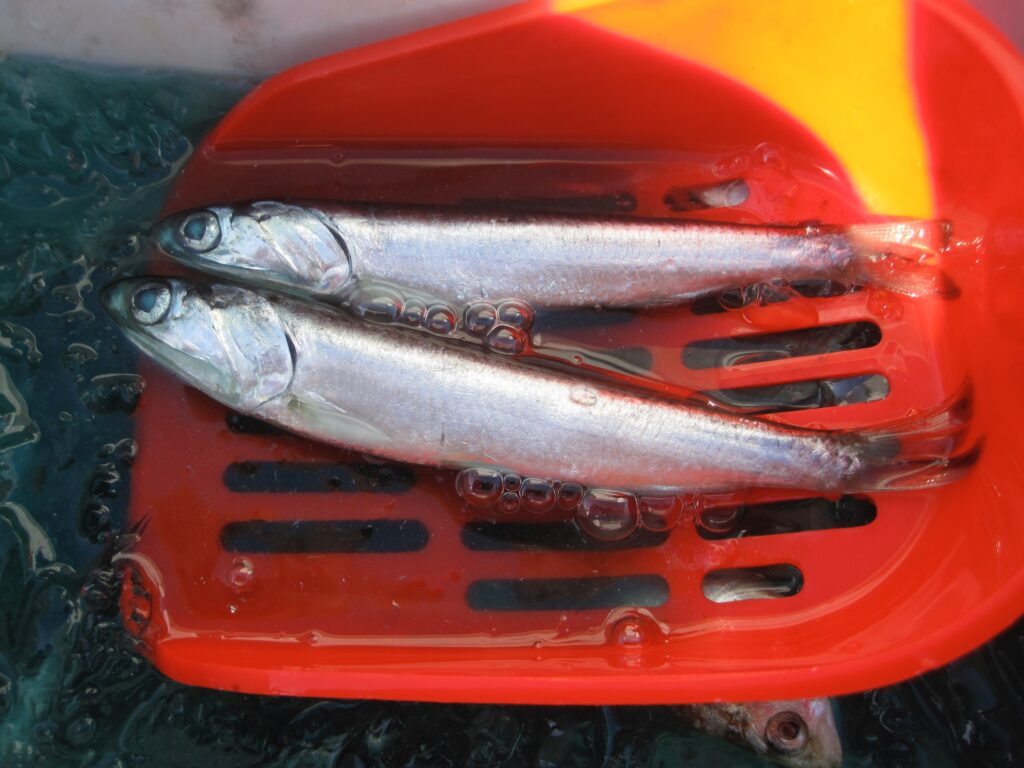
WHAT TO EXPECT IN 2024
Folsom is subject to big water level fluctuations throughout the year, one of the reasons the lake is challenging to fish. There is also a lot of current; the gamefish move around a lot and there is a lot of interplay between the rivers feeding the lake and the lake itself.
At times, a big percentage of the trout leave the lake and take up residence in the cool, forage-rich, well-oxygenated waters of the South and North Forks.
2023 was a unique year at Folsom, since the lake retained far more water than it ordinarily does due to the robust rain and snow we had last winter. This winter got off to a slow start, but has now kicked into high gear. It looks as if we are in for another very good water year at Folsom. The higher the water level, the less the fish move around, which makes it easier for anglers to dial in the bite.
In addition to having plenty of water, it looks as if there are going to be plenty of keeper-sized salmon in the lake this spring and on into summer. Last year was a little off in terms of king production, but anglers fishing the lake last summer and fall encountered a robust population of 10- to 12-inch salmon. When we caught these fish, we carefully released them. Those kings should be in the 14- to 16-inch range this year and will provide great sport for trollers. And of course, some of those big 24-plus-inch bombers that Folsom is famous for producing will be mixed in.
Likewise, the rainbow outlook is very good this year. Spawning production was likely outstanding last spring in the lake’s tributaries, thanks to plenty of cold water.
In terms of trout plants, CDFW has been putting hatchery fish into Folsom’s main body on a steady basis since last fall. Some of these fish are caught and some are eaten by predators, but a solid percentage of them have undoubtedly acclimated to the lake’s environment and are putting on weight by dining on all the baitfish. These fish will emerge as hard-charging holdovers this spring when water temperatures climb back into the middle 50s.
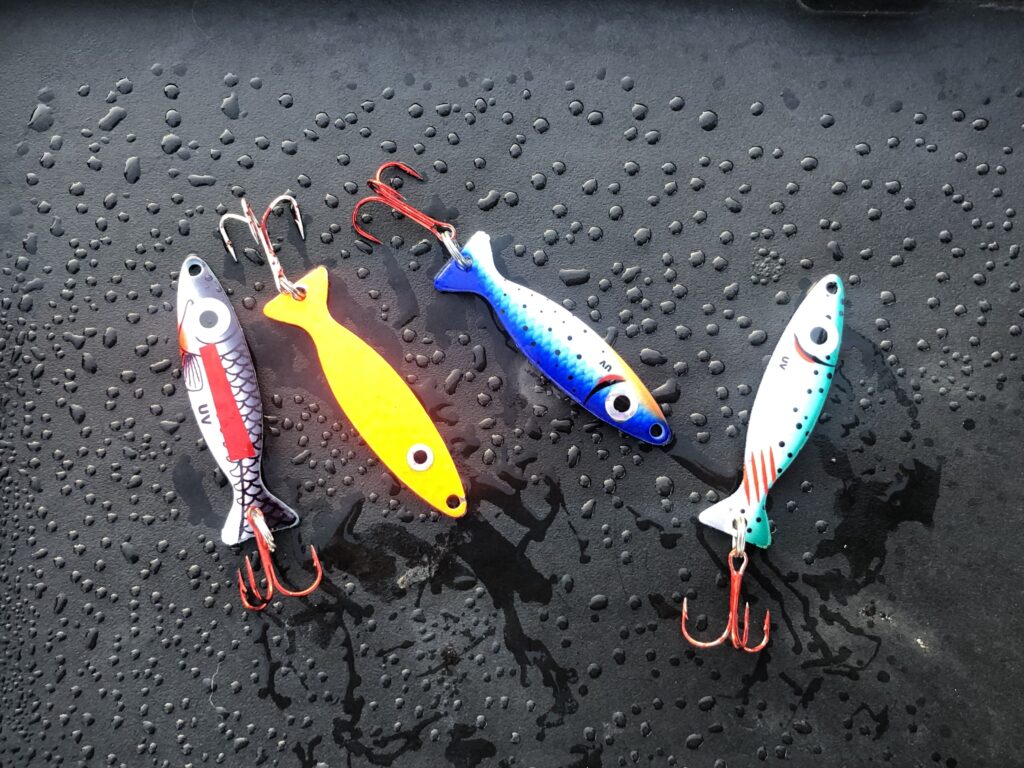
HOW TO WORK LATE WINTER, EARLY SPRING
As you read these words, we are on the cusp of late winter and spring, my favorite time of the year to fish Folsom. Water levels are maxed by midspring, recreational boat traffic is low and after a long chilly winter, the rising water temperatures prompt the lake’s trout and kings to feed.
During this time period you can certainly catch rainbows in Folsom’s main body and land salmon in the arms, but day in day out, you’ll find the best rainbow action in the arms and the best king fishing in the lake’s main body.
Whether targeting kings or trout, many Folsom anglers rely 100 percent on speed trolling with spoons, namely Speedy Shiners. Speed trolling is a great tactic because it allows you to cover a lot of water. But it also isn’t the answer to hooking fish all day, every day at Folsom Lake.
Here’s how I’ll be targeting rainbows from the last weeks of winter on into spring: I’ll be fishing the top 20 feet of the water column in the lake’s arms. I tend to fish the North Fork more than the South Fork, but both arms produce lots of trout.
I seldom work deeper than 20 feet until the surface temperature climbs above 65 degrees. On a typical day, I’ll start out power trolling from 2.7 to 3.5 mph with Trigger Spoons, Speed Spoons, Rapalas and Hum Dingers. My favorite colors are baitfish patterns in chrome, blue, copper, hot pink and bright orange.
Some days the power trolling bite is good all day long. Sometimes you’ll hit a few rainbows early and then things slow down. When that happens, I drop my speed to 1.8 to 2.2 mph and break out small spoons, soft plastics and threaded worms. My most productive offering last spring was a pink or white 3-inch Trout Trix Worm teamed with an Action Disc and trolled naked. My second most productive combo was a 2-inch section of threaded nightcrawler pulled behind a 4- or 6-inch Fish Eye or Sling Blade Dodger.
When you hook a rainbow, work that area thoroughly, because where you find one, you’ll likely find more. You may find trout out in open water, but I have good success working inside coves and along the bank.
Last June I located a cove near Anderson Island on the North Fork and hooked 16 rainbows by working a 150-yard-long stretch of shoreline. The fish were holding in 15 feet of water and couldn’t lay off a pink Trout Trix.
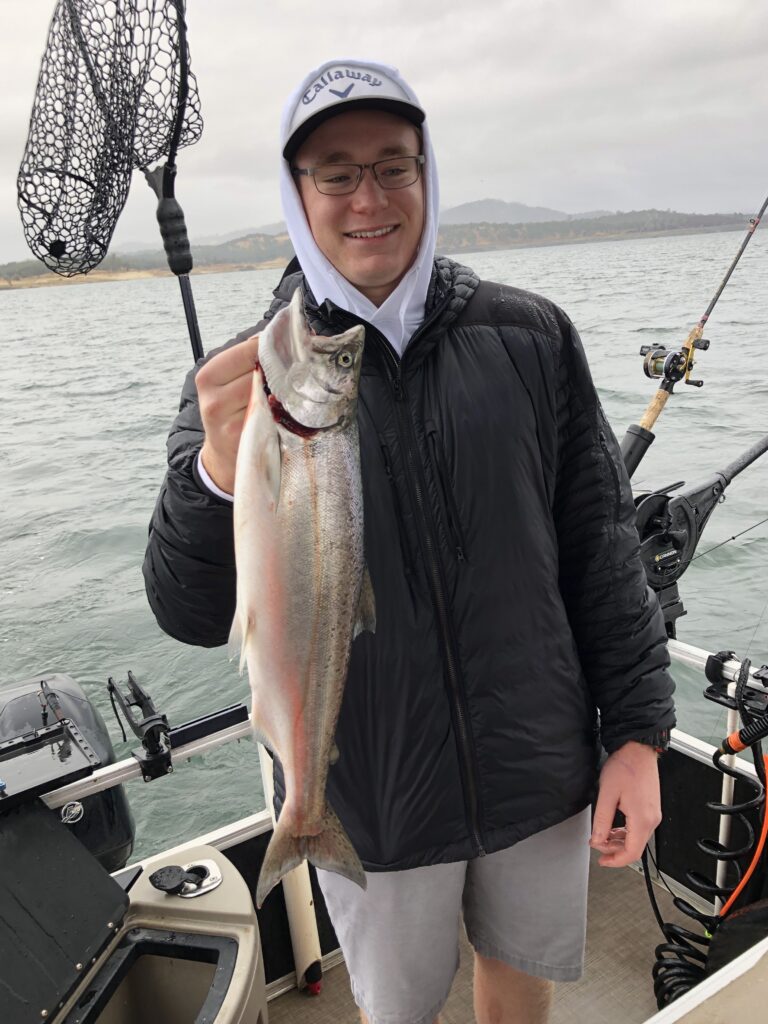
KEYS FOR KINGS
King salmon are the kings of Folsom Lake in terms of cold-water angler interest, and why not? When things are going well here, kings in excess of 20 inches are common and salmon to 16 pounds have been landed over the past few seasons!
The lake’s main body is the place to chase kings. The area over the river arms produces plenty of salmon, but the best areas are the deep-water structure off the peninsula and off the lake’s various dikes.
A lot of king anglers adhere to a find-the-bait, find-the-fish approach. If I see a baitfish school with hard marks on it, I’ll certainly drop baits, but overall I’ve caught more kings here working structure in the form of submerged humps and high spots.
The biggest king I got while guiding last season came off the top of a hump 55 feet below the surface and surrounded by water ranging from 160 to 220 feet deep. There was no bait in the area, but the fish was holding on the hump ready to ambush and got a big surprise when it grabbed a purple and white Speed Spoon zipping along at 3.2 mph!
Most of the really big kings I’ve caught at Folsom have been solitary fish, meaning when they struck, I wasn’t catching small or average-sized kings. They were loners lurking around structure.
Your sonar is great for identifying structure, but just because you aren’t marking fish and bait doesn’t mean a bucket-list king isn’t in the area. Sometimes, when the structure looks right, you just have to spend a little time trolling on faith. The rewards can be great when it comes together.
For kings, you can cut your lure selection down to a minimum. On the fast end of the spectrum, stick with metallic and baitfish-pattern Speedy Shiners and Speed Spoons. When it’s time to slow down into the 1.8 to 2.2 mph range, Tasmanian Devils work well, as do hoochies rigged behind 6-inch Sling Blades and Fish Eye dodgers. When pulling hoochies, tip your hooks with small pieces of anchovy meat.
If you really have your heart set on getting a massive king, roll whole tray bait anchovies around the main lake structure. For this work, you’ve got to have patience. Bait stealers will ruin some baits and you’ll go through long periods with zero action, but when the strike you’ve been waiting for comes, you’ll forget about the hours of waiting and the hassle of carrying and rigging anchovies! CS
